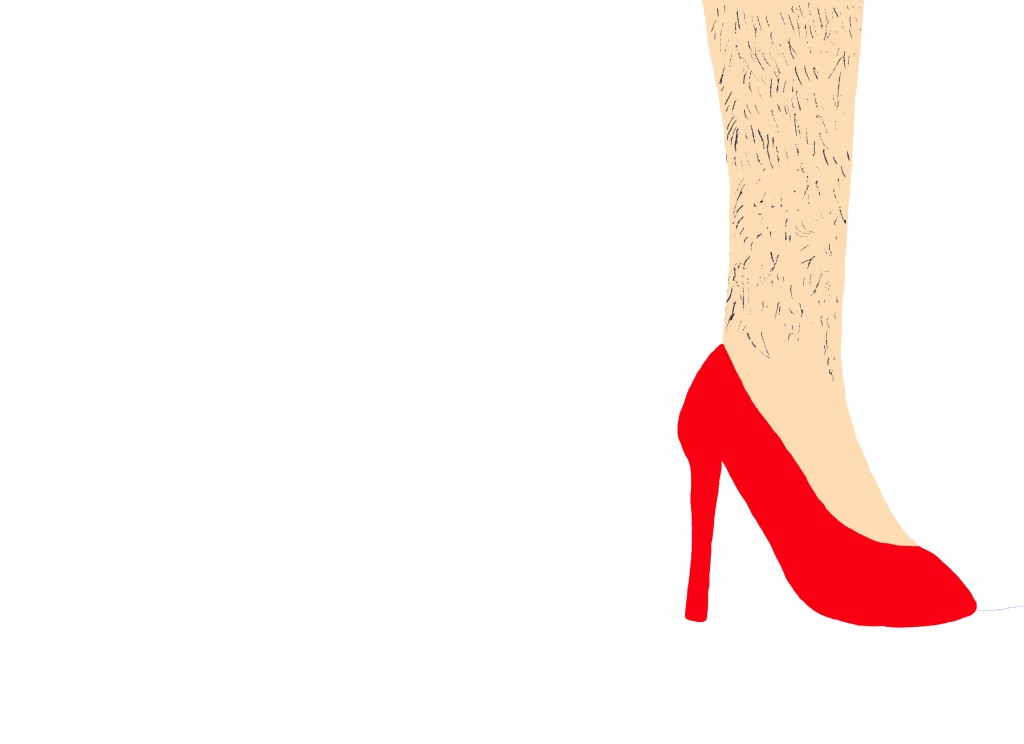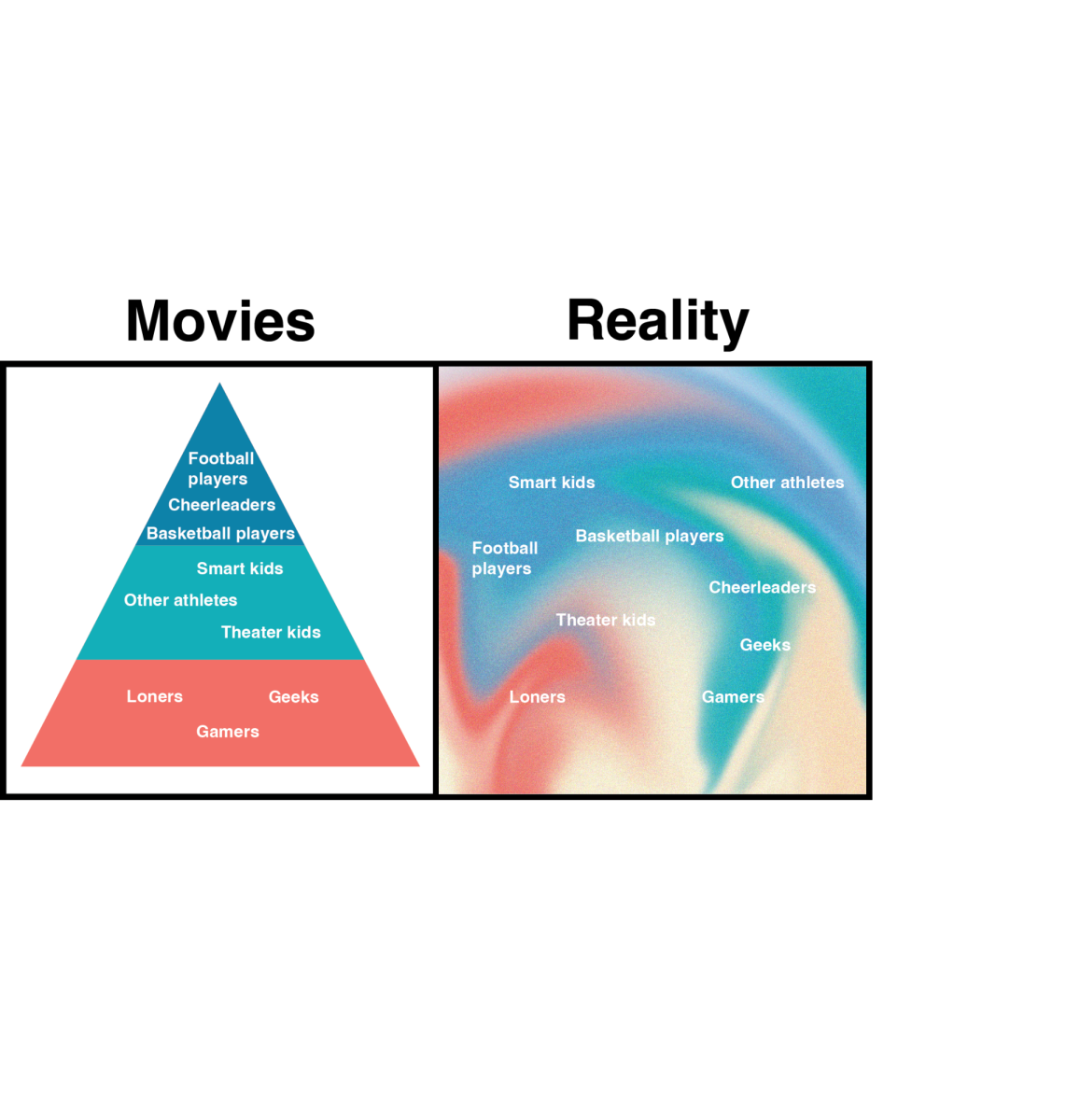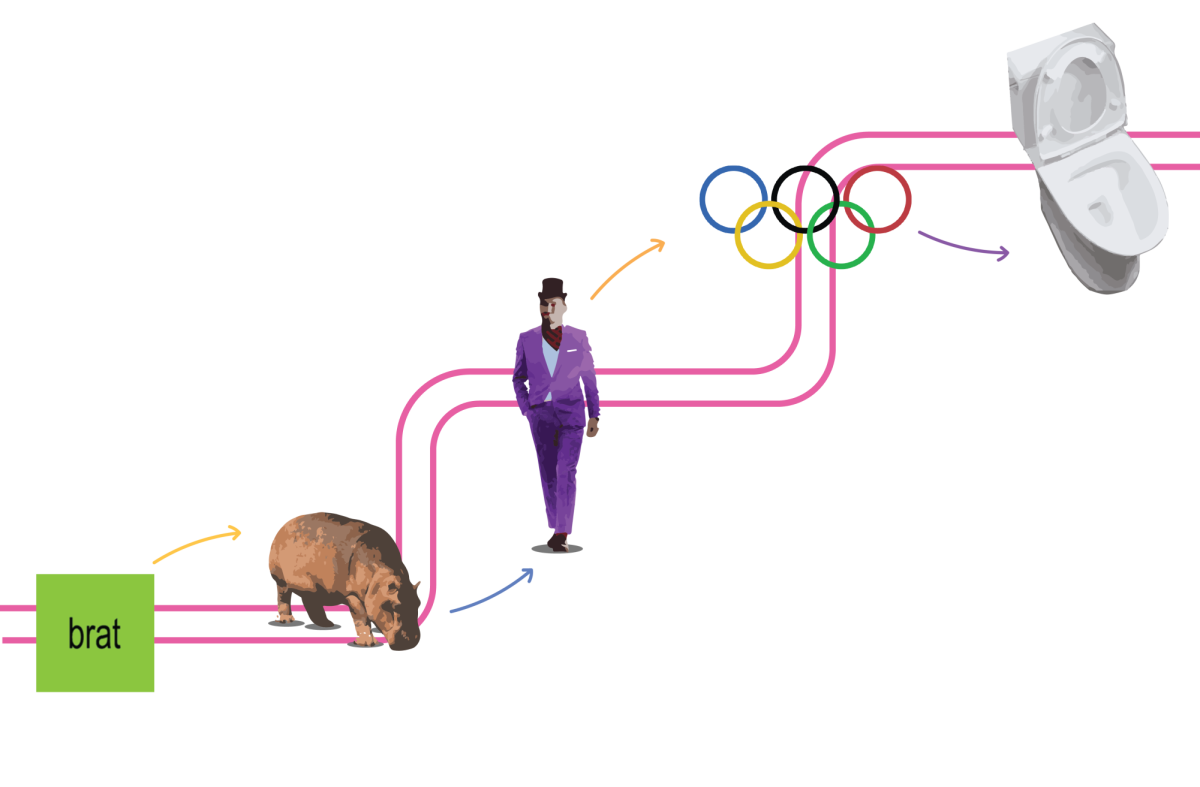Millions of women across America toil endlessly in an attempt to live up to the societal expectation of having silky smooth legs, spending hundreds of dollars each year on leg hair removal. Whether through shaving with a razor, waxing, hair removal cream, or laser hair removal, women in the United States are expected to conform to this cultural tradition of having soft, hairless legs in order to be deemed socially acceptable. Hair-free legs are viewed as a symbol of femininity, and advertisers have made it very plain to both men and women that hairy legs on girls are simply unacceptable. It is considered manly for a woman to have hairy legs or armpits; any hair on a woman’s body is taboo. Men, however, are only excpected to shave their beards. Even then, facial hair on men is optional. Clearly, a double standard exists when it comes to hair removal.
Objectively, the costs of hair removal seem to outweigh the benefits. The traditional razor can leave the skin with razor burn, while hair removal creams can cause a chemical burn, not to mention the putrid smell. Within merely a few days of shaving with a razor, leg hair grows back dark and stubbly. The more often you shave, the faster the hair grows back, and the more you need to shave. Waxing is a less frequent and more efficient method of hair removal. However, waxing is a more expensive and significantly more painful alternative. Laser hair removal is an incredibly pricey option that requires multiple procedures and is not guaranteed to remove all hair. According to Mayo Clinic, “Laser hair removal doesn’t guarantee permanent hair removal. Some hair could be resistant to the laser treatment or grow again after treatment — although the new hair growth might be finer and lighter in color.”
The most common adverse side effects of laser hair removal are skin irritation and pigment changes, both temporary in most cases. However, the American Academy of Dermatology states, “Other possible side effects include blistering, herpes simplex outbreaks, bacterial infections and temporary skin lightening or darkening.” Mayo Clinic also states, “Rarely, laser hair removal can cause blistering, crusting, scarring or other changes in skin texture.” So yes, women all over the country can and do find ways of abolishing the hair on their legs, but at what cost?
According to Glamour Magazine, the average American woman spends $10,000 in her life time on shaving related products, 11% of American women shave every day, and the typical American woman shaves an average of 7,718 times in her life.
In many European countries, it is not the norm for women to shave their legs. Why is shaving leg hair such a huge deal for women in the United States?
“It’s just the status quo,” said science teacher Lali Derosier. “We do it because our mothers did it, and it falls under our definition of femininity. I think there’s some unspoken reference to youthfulness. Young girls have hairless legs.”
The 1920’s in the United States is famous for the gender revolution that occurred, in which women embraced their sexuality, challenged gender roles and the status quo, and fought for equality.
Derosier said, “In the 1920’s, women in the U.S. started showing their legs and armpits. American culture up until that point had been very prudish. It was very normal for men to never see their wives unclothed—[shaving] has to do with the visibility of skin.”
However, the expectation for women to shave their legs and armpits has experienced a shift since the 1920’s. Girls today are shaving their legs younger and younger.
According to NBC News reporter Ruth A. Peters, Ph.D., “It’s not unusual for girls in the fourth and fifth grades (10- and 11-year-olds) to show a distinct interest in wearing makeup and shaving their legs…Most parents, though, believe that middle school is the proper time for these grown-up behaviors to begin to be allowed.”
Today in America, children are being brought up in a culture that discourages natural beauty and idolizes a superficial and altered perception of attractiveness.
Shaving is merely one example of this. The pressure to wear make-up, dye hair, and undergo body modifications such as plastic surgery is on the rise. When this kind of behavior is encouraged, young girls often feel that conformity correlates with happiness and high self-esteem. Peters explains that young girls often begin shaving at a young age because they want to fit in with their peers.
While shaving may seem harmless, beginning shaving at a young age sets girls on the path of trying to live up to society’s notion of beauty, which is often unrealistic and unattainable, as opposed to embracing their natural and personal beauty.
Unfortunately, this societal trend of women ridding themselves of leg and armpit hair is perhaps merely the symptom of a larger problem. The over-sexualization of women is a prominent issue in Western cultures.
“Whatever the cause, the fact of the matter is that the sexualized images of women in the media are highly prevalent. Young women, seeking to fit in by looking stylish, adopt these images without giving the decision serious thought,” wrote Susan Krauss Whitbourne, Ph.D. in a Psychology Today article.
Derosier said, “I think it’s definitely an issue in that particularly girls have unrealistic expectations of the standards they should be striving for. For men, what’s being promoted is health and athleticism. For women, it’s ornamental beauty, an idea of beauty that because of Photoshop doesn’t even exist.”
Although advances have been made in encouraging women to love their bodies, the societal pressure for girls to have the “perfect body” still weighs on women of all ages across the United States. Our cultural perception of beauty has some shocking consequences; it is the birthplace of many psychological disorders that become harder and harder to cope with in later years.
According to the National Association of Anorexia Nervosa and Associated Disorders, “Women are much more likely than men to develop an eating disorder. Only an estimated 5 to 15 percent of people with anorexia or bulimia are male.” According to The South Carolina Department of Mental Health, “It is estimated that 8 million Americans have an eating disorder – seven million women and one million men.” This is a direct result of our unrealistic perception of feminine beauty. “The body type portrayed in advertising as the ideal is possessed naturally by only 5% of American females. 47% of girls in 5th-12th grade reported wanting to lose weight because of magazine pictures, and 69% of girls in 5th-12th grade reported that magazine pictures influenced their idea of a perfect body shape.”
Is the time, money, and effort spent shaving your legs really worth it? Women should not have to live up to this societal expectation any longer. I’m not saying you should all go cold turkey and never shave your legs again. If you want to keep shaving your legs, go ahead. What I am saying is this—shave your legs because you want to, not because you feel like you have to. If you don’t want to shave your legs, then don’t; societal norms shouldn’t influence your decision.
Perhaps try not shaving your legs for a week, or even a few days, and see if you like it. Embrace your natural beauty. You never know; it might be the last time you ever shave again!
It’s not your silky smooth legs that give you empowerment, but rather the choice you make as to whether or not you want to have hair-free legs. Both hairless and hairy legs are beautiful. It is time that we look past this gender schema and accept that some women simply don’t want to shave their legs. Empower yourself by doing whatever you want to do, despite the societal pressures you may encounter. Whether you’re male or female, shave or don’t; it’s your choice. Your self-worth is not defined by the amount of hair on your body.















